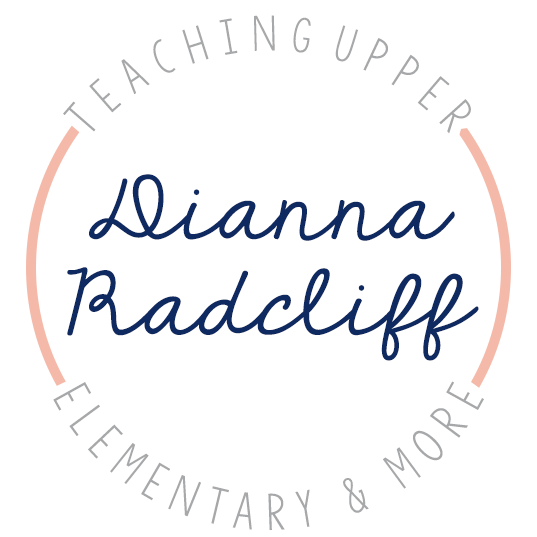
Hello Friends~
I’m here joining with my bloggy friends for another book study hosted by Amanda at The Primary Gal!
Last week we posted about Chapter 1. If you didn’t get a chance to read it,
CLICK HERE!
Part I: Defining Beliefs & Aligning Practices
Chapter 2 is about the journey Debbie Miller went on to match her beliefs and practices. It’s a journey most teachers do not devote enough time to do. Most of us say we do, or say we will, but don’t really ever go through the process of doing it. It was very interesting to read this & see that this process isn’t quick nor does it have a specific time frame. This process is more so a journey of a teacher really figuring out whom he or she is.
At the beginning of the chapter Debbie states her beliefs:
- Classroom environments are most effective when they are literate and purposeful, organized and accessible, and most of all authentic.
- We cannot underestimate the power of our influence – what we choose to say and do in the classroom profoundly affects the ways children view their teacher, themselves and each other.
- Learning is maximized when the lessons I design are purposeful, interactive and engaging, with real world applications.
- The gradual release of responsibility instructional model, integrated into a workshop format, best guides children toward understanding and independence.
- Formative, ongoing assessment enlightens and informs my day-to-day work with children.
- A workshop format based on the elements of time, choice, response and community fosters active, responsive teaching and learning (Hansen 1987).
(Teaching with Intention, 2008, p.17)
After this section, Debbie described that defining her beliefs about education took a chunk of a school year after many years of teaching already. That this wasn’t “somebody else’s” package of beliefs but her own.
Real life isn’t scripted. Neither is real teaching.
(Teaching with Intention, 2008, p.17)
Next the chapter takes you into matching your beliefs and practices. This is where I had a visual in my head of myself during different parts of my teaching career and lots of connections. During this part of Debbie’s journey she and a group of colleagues worked together on a weekly basis. A minimum of 3 times a week, Debbie took 15 min at the end of the day to journal about her practices in the classroom. Everything was looked at from morning work, announcements, recess and dismissal.
The questions that Debbie asked herself while maker her journal entries were:
- Where’s the evidence of this belief in my classroom?
- What kinds of things should I be seeing, hearing, doing to support this belief?
- Where does this practice fit into what I say I value?
- What studies support this practice?
(Teaching with Intention, 2008, p.18)
This part of Debbie’s journey is when she found out the truth about herself, it was like she was spying on herself. She made many discoveries that her beliefs and practices were not in sync. Debbie then gave a specific example of a reading lesson in her classroom where her practice was not aligned with her beliefs that really got her thinking.
The most powerful part of this journey became her sense of awareness by sticking to this process to help her determine her beliefs and practices.
Each week when her & her colleagues met to reflect they always became more aware of what they were really doing or not doing within their own classrooms.
The other key take away from me in this chapter was when Debbie stated this…
“I once heard Donald Graves say that wiring is the ultimate for of synthesis…”
(Teaching with Intention, 2008, p.19)
YES!!! I AGREE!!! KEEP A JOURNAL PEOPLE!!!! Think about it, when you take handwritten notes or even make a to do list you will better understand things you have written than anything you say. Another ah-ha, written comprehension when assessing reading comprehension is waaaaayyyyyyyy more valuable to me than any oral comprehension.
Debbie ended this chapter with her wish for the reader… Beginning teacher or veteran teacher, sit down and define your beliefs {it’s OK that you change them along the way}. Then start to observe yourself on your practices.
Well I never made a formal list or anything… I say things to myself all the time though… So right now, today here are my beliefs:
- Read-a-loud, shared reading, guided reading, independent reading & reading conferences need to happen daily in the classroom.
- Each lesson should have a focus & a purpose visual to you & the students. I prefer to use anchor charts that will stay up in the room as a visual for student reference after the lesson.
- The day should be set up in workshop formats. Each workshop should have a mini-lesson, work period & closing.
- Classroom environments should be organized, tidy, print rich & easy to move around. Student work displays for everyone should also be a part of each classroom. It’s important for students to feel that it is their classroom as well.
- Classroom routines should work in patterns throughout the day so the students gain independence in the operations of the classroom.
- Teacher’s oral and written language should reflect the academic vocabulary from the standards.
- Most importantly to young ones, love. Show your students you do care about them & you want them all to succeed. Be the teacher they remember!
So I’m going to take this list & post it near my desk or personal stuff. I will refer to it when I look at my practices. Through the year I know there will be some changes, but I’m wondering where this list might take me!
Now it’s your turn! GO!







